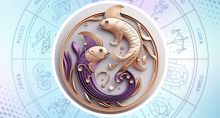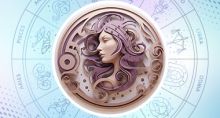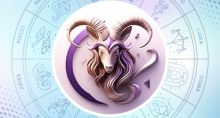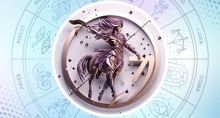Lord Shiva: The Ultimate Grandmaster of Yoga
Shiva is one of the major deities of Hinduism and personifies the practice of Yoga. As Yogeshvara, the great lord of Yoga, Adi Yogi, Adi Natha, and Mahayogi, he controls all aspects of Yoga related to the body, mind, and consciousness. Those who seek to understand the origins of Yoga and the role of yoga practices must first look to Shiva, not only relative to historical teachings, but as the eternal presence of Yoga as the Supreme Consciousness behind the universe.
Shiva is the lord of asana practice. 84 lakhs of asanas are derived from his movements. This reveals Shiva’s connections with Yoga asanas As Lord Nataraj, the lord of dance, his dance and gestures also reflect yoga postures, beginning with the 108 main traditional poses of Indian dance.
Shiva signifies the immortal Prana, the undying force of eternal existence and pure Being. He is Mrityunjaya, the one who conquers death. Tantric yoga teachings about Prana are linked to Shiva, who holds the inner power of Pranayama. Pranic Mantras like Hamsa and So’ham relate to Shiva.

All Mantras come from Shiva. He is the primordial cosmic sound, Omkara. All the letters of the Sanskrit alphabet arise from his drum and reverberate. Shiva is said to be all the vowels. However, he encompasses every aspect of primal sound, nada, and music.
Shiva is the lord of meditation, who is depicted seated in deep meditation, dissolving the entire universe into himself. In his youthful form, Dakshinamurti, he is the teacher of Jnana Yoga (Yoga of knowledge), through the power of the silent mind, who enlightens all the great Rishis.
Adi Shankara, who taught Advaita or non-dualist Vedanta, is believed to be a manifestation of Shiva.
Symbolism of Shiva
Shiva has three eyes or Tryambakam. The 3rd eye of Shiva is the inner eye of unitary awareness and higher perception beyond all duality. Shiva as the god of the mountain, the Himalayas in general and Mount Kailas in particular, symbolizes the mountain of meditation which also the mountain of the spine and the subtle body, the great cosmic mountain.
The river Ganga that flows down on Shiva’s head signifies the immortal stream of higher yogic awareness from planes and lokas beyond the material world. The Shiva Linga, his upward focused energy, stands for the ascending power of Yoga, the silent mind of Samadhi and the yogic state of transcendence, the pillar that supports the entire universe.
Shiva’s consort is Devi or Shakti, the Divine Mother. She is the Yoga Shakti, the power of Yoga, and is always honored along with him. She is depicted as the left half of Shiva’s body. From the Kundalini Shakti in the human being to the power of consciousness (Chit-shakti) at a cosmic level, she reflects his magnificence and enables us to experience it.
Traditions of Shaivite Yoga
Many great Yoga traditions are derived from Shiva and see him as their original guru. Many of the Himalayan sadhus are Shaivites. Shaivite Yoga includes the renowned Nath traditions that formed the main teachings of Hatha Yoga and Siddha Yoga, including Gorakhnath. In Vedic times, Shiva was praised as Rudra along with the Maruts, his wandering sages who held the power of Mantra and Prana. Great Rishis like Vasishta were his devotees. Shaivite Yogis maintain a special sacred fire to honor this Vedic heritage.
In the Mahabharata, Shaivite Yoga is called Pashupata Yoga. Shiva is Pashupati, the god of all animals. He has 3 heads in this form. This is the most enduring image of Shiva in Indian art, found as early as the Harappan period. Yet ‘pashu,’ which means ‘animal,’ also refers to the seen world, and Shiva is the seer. Also, the animals symbolize the Nakshatras or constellations, with Shiva representing the Sun. He represents the eternal presence of Yoga behind India’s dharmic culture.
Shiva’s shrines in India hold many yogic powers. His shrines range from Mount Kailas and Lak Manasarovar in Tibet in the north to Rameshwaram in the south, and also the 12 Jyotir Lingas from Somnath to Kashi Vishwanath. Kumbha Mela, the world’s largest religious gathering, provides a center stage to his worship. It extends to hundreds of millions of devotees led by Naga Sadhus, who are Shaivites.
People who practice Yoga should always honor Shiva, the great lord of Yoga. If you surrender to Shiva inwardly, the powers and insights of Yoga will be revealed to you at the right time and in the right manner. Shiva is the inner guru of Yoga. All true gurus can function only with his blessings and insight.
Shivaratri (meaning ‘the night of Shiva’) is the most auspicious day of the year to worship Shiva. On this occasion, devotees stay awake all night performing special rituals and chanting Mantras to Shiva to awaken his power within them. There are also Shivaratris every month, during which one can worship him.
Shiva resides in the ever wakeful pure awareness that is our true Self beyond waking, dream and deep sleep, as the Upanishads claim. Where that Shiva state of peace and detachment prevails, the universe returns to its original state of overflowing bliss.
Moving into our own deeper Shiva nature, we transcend body, mind, time, and space into the immortal pure light of infinite awareness. In our inner being, we are Shiva. The body, mind, and universe as a whole are merely our play of manifestation, which we inherently transcend.




















